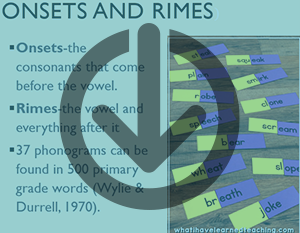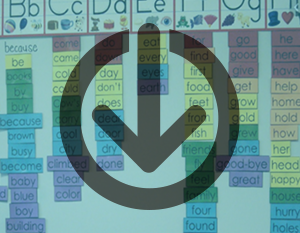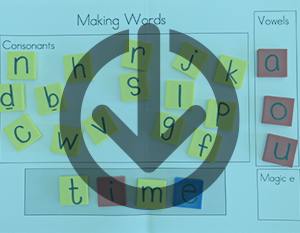Literacy Strategies
Literacy Strategies, Page 2
Select a strategy below
Yopp Singer Test
Description: The Yopp-Singer Phoneme Segmentation Test uses phoneme segmentation to assess phonemic awareness. In the test, the assessor gives examples of segmenting and then has the student segment the sounds of spoken cue words.
Purpose: I would use this test to assess the student's knowledge of phonemeic segmentation/the sounds of spoken cue words.
Rosner Test (TAAS)
Description: The TAAS evaluates the child’s ability to identify the separate sounds in spoken words and the temporal sequence of those sounds. It does this by asking the child to delete sounds and to show that s/he can do this by voicing what is left after the deletion. Children are first able to grasp this concept at about age four and become better at it from then on.
Purpose: The TAAS is for use with kindergarten children (and some preschool children).
Decodable Texts
Description: Decodable text is a type of text used in beginning reading instruction. Decodable texts are carefully sequenced to progressively incorporate words that are consistent with the letter–sound relationships that have been taught to the new reader. They are written around and feature many letter-sound relationships (Fountas and Pinnell, 1998).
Purpose: I would use decodable texts to help beginning readers learn patterns (useful as a stepping stone for sight and high-frequency words). Ensures that children use phonetic elements of words to decode text.
Tracking
Description: Tracking is the ability to move one's eyes smoothly across the page and from one line of text to another. Problems can arise such as eye fatigue, word omissions, reversals, losing one's place while reading and most importantly these difficulties can negatively impact reading comprehension.
Purpose: I would use this strategy to help students not lose their place while reading.
Masking
Description: Word masking allows the child to only have to attend to the word they are working on, as it blocks out all other text. This should be used as a tool to support word solving and should be removed as soon as the student is capable of doing this solving on their own.
Purpose: This masking card strategy can be used to help students see parts of words. Make sure the student rereads to put it all together.
Onsets and Rimes
Description: The study of onset and rime is crucial to the development of reading and writing in K-2 students.
Purpose: I would use an onsets and rimes activity to allow students to explore books and magazines for words that have the ig rime, in addition to brainstorming their own words.
Word Walls
Description: 1) Serve as a permanent record of students’ language learning. 2) Provide on-going support for language learners. 3) Enhance learning through practical use. 4) Using references is a real world strategy. 5) Easily integrated into daily literacy activities.
Purpose: I would use a word wall to helo practice words daily along with other activities such as chanting, snapping, cheering, clapping, tracing and using word guessing games.
Sound Walls
Description: Meant to elevate daily instruction by reviewing the 44 speech sounds and the options for spelling each of the sounds.
Purpose: I would use a sound wall where a word wall stops being effective. With a word wall- it is basically slapping letter sounds on the wall and organizing them. The advantage to a sound wall is that students can mirror practicing sounds (such as observing how their mouths look when they make a sound).
Making Words
Description: Making words stragegy builds holistic understanding of language by exploring how sounds form words and words form ideas.
Purpose: I would use this strategy to help students explore making words and connections between letter-sound correspondences.
Basic Phonics Skills Test
Description: This is a phonics assessment that consists of the recognition of letter sounds, specific phonics patterns, and the blending of single syllable and polysyllabic words out of context.
Purpose: I would use this test to assess student's ability to recognize basic phonological awareness.





